Let’s explore the pros & cons of living in St. Louis, Missouri, from the cost of living and job opportunities to weather and community life.
The St. Louis Metropolitan area has around 2.8 million residents, with about 280,000 living in the city of St. Louis.
Here’s what we’ll cover in this article:
Pros
- St. Louis is affordable
- Rich culture & arts scene
- Parks everywhere
- Fantastic education opportunities
- St. Louis is a big foodie city
- Rich history & architecture
- STL sports culture
- Central location
- Job growth & economy
- Basically no traffic
Cons
Getting to Know St. Louis
If you’re new to the Gateway to the West, hearing people talk about St. Louis can be confusing.
Here are a few things to keep in mind:
People might say, “I’m from the Illinois side” when referring to the Metro East. Although St. Louis City is only in Missouri, the metro region includes Illinois.
St. Louis County vs. St. Louis City: The City of St. Louis is an independent city. St. Louis County is a completely separate governmental entity that surrounds the City of St. Louis.
Here are some things that differ between the city and county:
- School district
- Local government
- Income tax rate
- Sales tax
- Police department
- Zip code
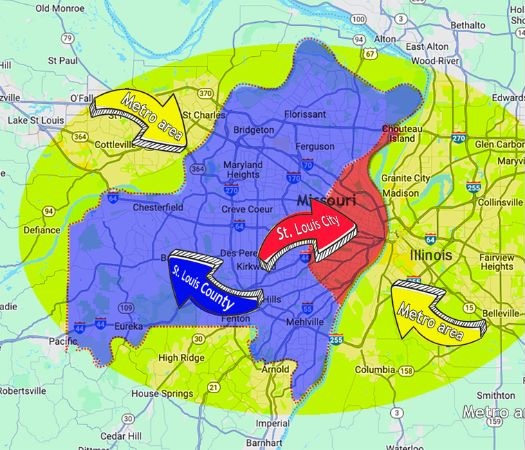
In this article, we’ll mostly focus on the City of St. Louis, with some references to nearby areas inside the I-270 loop.
The area feels more suburban once you get past the inner I-270 belt.
Pros of Living in St. Louis
1. Affordable Cost of Living
One striking aspect of the St. Louis area is that most of the people who live here are from here.
Many of those people will reference the low cost of living as a reason why.
According to Rentcafe, the cost of living in St. Louis, MO, is 11% lower than the national average.
Here’s a breakdown:

Affordable housing is especially attractive compared to the national average.
According to Redfin, the median home value for a single-family home is $275,000 in St. Louis compared to $464,520 in the U.S.
When moving to St. Louis, you’ll find a variety of housing options. Whether you want an urban city neighborhood or one of the rural areas farther west, your living expenses will be relatively low.
In terms of housing costs, you’ll want to know property taxes in Missouri are on par with the national average.
2. Rich Cultural Scene
St. Louis has a rich arts and cultural scene. Many of the attractions are free or have free options.
The Muny: Think of the Muny as St. Louis’ Broadway, but outside. It’s North America’s oldest and largest outdoor musical theater that puts on seven grand Broadway-style musicals each summer.
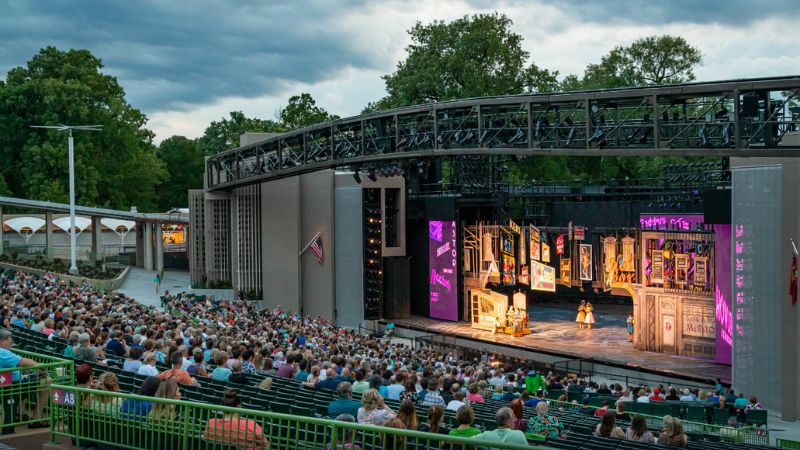
The Muny is in Forest Park, one of the most beautiful parks in St. Louis.
They put on an amazing show with incredible sets and performers. Tickets for prime seats can be up to $100, but they reserve the last nine rows for patrons on a first-come, first-serve basis for free.
St. Louis Art Museum (SLAM): The St. Louis Art Museum (also located in Forest Park) is huge, with a collection that spans five millennia and six continents!
The Museum is always free to visit, except for special exhibitions, which are only free on Fridays. Check out their calendar for Friday night events, including live music, crafts, and drinks.
Contemporary Arts Museum of St. Louis: Another free museum that regularly changes exhibits and hosts a variety of events. Located in the Grand Arts District, this is a destination for art lovers on First Fridays.
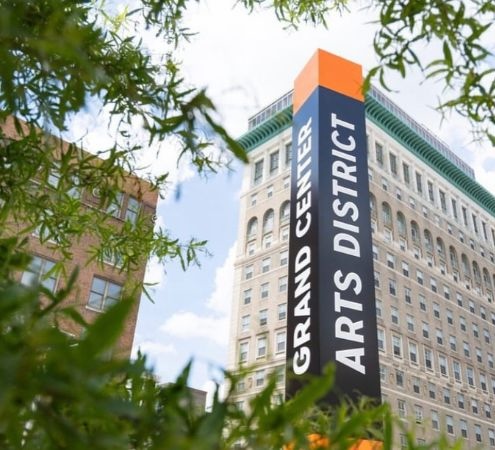
First Fridays in The Grand Central Arts District: First Fridays happen the first Friday of every month.
The museums and galleries in the Grand Central Arts District are free and open until 9 p.m.
There is usually entertainment, performing arts, interactive events, and an after-party.
Participating galleries can vary but typically include:
- Angad Arts Hotel
- Contemporary Art Museum St. Louis
- Metropolitan Artist Lofts
- Museum of Contemporary Religious Art
- Sophie’s Art Lounge
- Pulitzer Arts Foundation
- St. Louis University Museum of Art
Circus Flora: St. Louis has its own Big Top Circus Flora, which is its home circus. For 38 years, it has delighted St. Louisans with a blend of traditional and modern circus acts.
They typically do one big show a year at the top of summer. You’ll need to buy tickets, but they are well worth the cost and cheaper than Cirque Du Soleil.
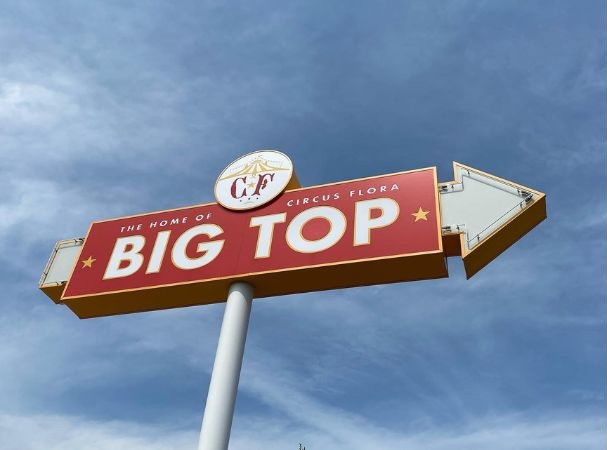
Missouri History Museum: Another feature of Forest Park is that the museum appropriately sits at the entrance to the 1904 World’s Fair.
It looks at the rich history of the St. Louis region from pre-colonial to the present day and is free to visit!
Other St. Louis Attractions
The Saint Louis Zoo: The zoo (also in Forest Park) is free! Special events and some attractions, like the sea lion show, have a cost, but there is no general admission during regular
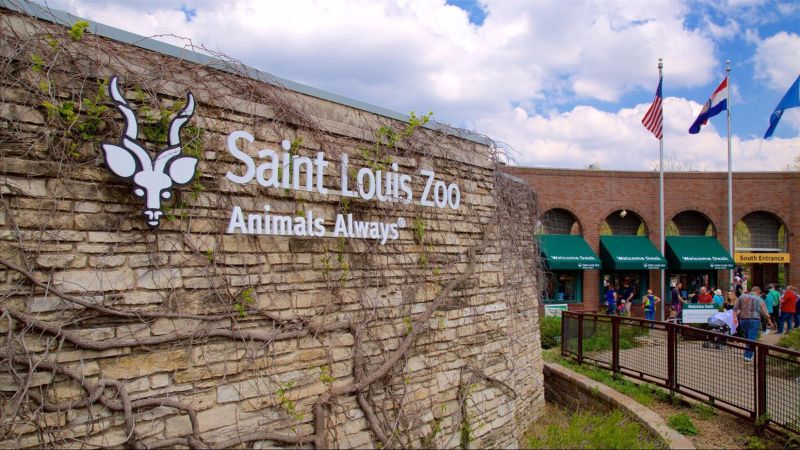
Gateway Arch National Park: Home to the iconic St. Louis Arch, the Gateway Arch National Park hosts various events yearly.
And the rumors are true! You CAN go up in the arch for a spectacular view of St. Louis.
The tram ride to the top costs money, but the museum under the arch is free.
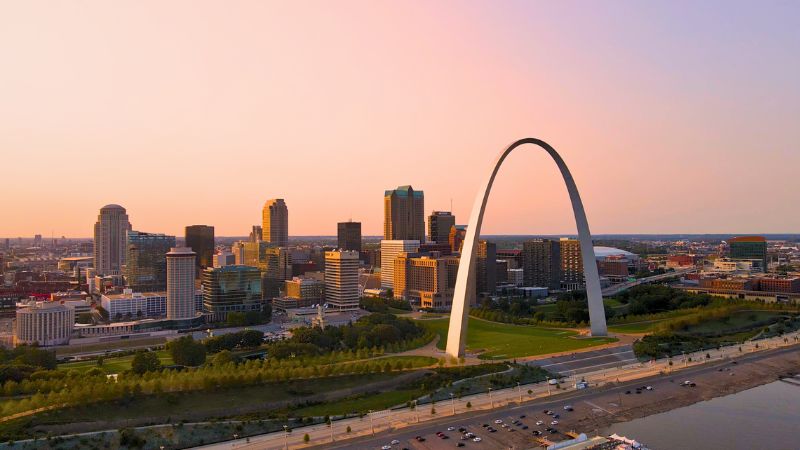
The Missouri Botanical Gardens: Next to Tower Grove Park, these gardens are beautiful and diverse, featuring a picturesque lake and Japanese Gardens.
They host various events throughout the year, including Garden Glow, Concerts in the Garden, a Japanese Cultural Festival, and Holiday Lights.
You do need tickets to visit, but if you’re a St. Louis resident, you can get a discounted ticket for $6.
Members can go for free. General admission is usually $16.
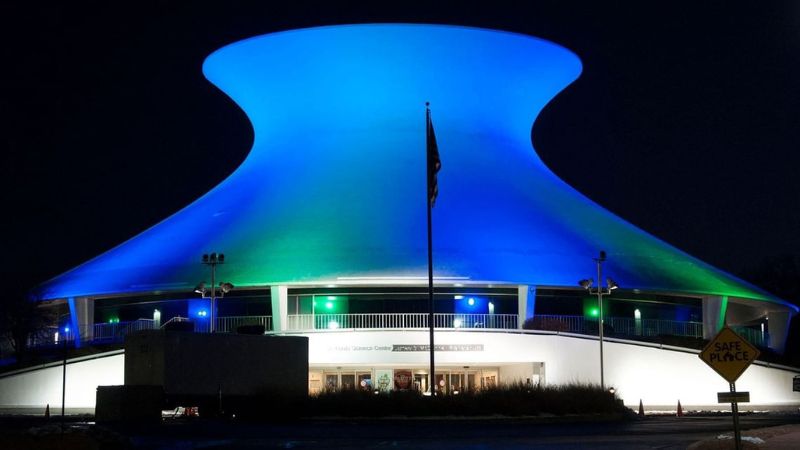
Saint Louis Science Center: A great place to take the kids. The center has interactive exhibits, a planetarium, and an Omnimax theater.
The planetarium and the Omnimax theater are ticketed attractions, but general admission to the science center is free.
City Museum: Known nationally for its quirky, interactive installation pieces, you can play, climb, watch, and slide at City Museum.
There is an admission price, and there is a resident circus group that performs daily.
3. Parks and Green Space
There are parks everywhere in St. Louis. It’s a great city if you love outdoor activities.
St. Louis has everything from large historic sites with lakes, trails, and amenities to small neighborhood parks that are great for grabbing lunch and having a picnic.
The city’s location gives you great access to nearby State Parks, the Katy Trail, and views of the Mississippi and Missouri rivers.
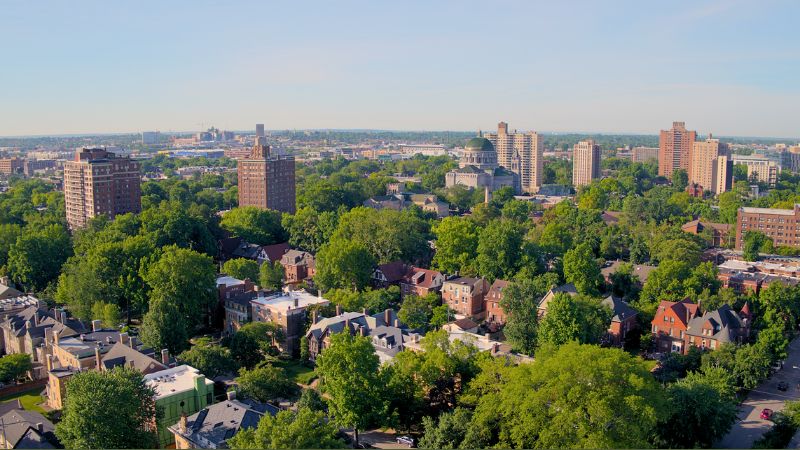
Highlighting St. Louis’ Most Notable Parks
Forest Park: Forest Park is enormous, with 1300 acres, and home to:
- The Muny
- Missouri History Museum
- Saint Louis Art Museum
- Saint Louis Science Center
- Saint Louis Zoo
- A golf course
- Lakes and waterways
- Hiking trails
- Running trails
- Athletic Fields
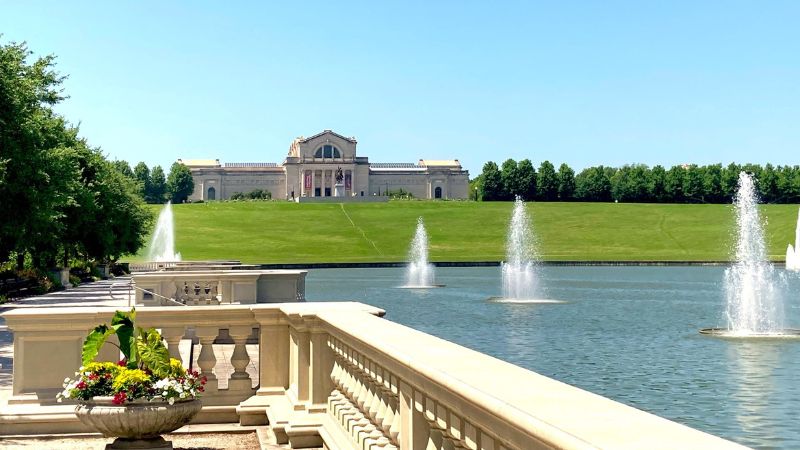
Insider tip: When it snows, people go to Art Hill, the hill directly in front of the St. Louis Art Museum, and sled down it! Bring your own gear and expect a lot of people.
Tower Grove Park: Tower Grove hosts a weekly Saturday Farmers Market during Spring, Summer, and Fall.
It also has:
- Multiple beautiful pavilions for the public to use
- Athletic fields
- Pickleball and tennis courts
- A basketball court
- A very cool fountain designed to look like ruins
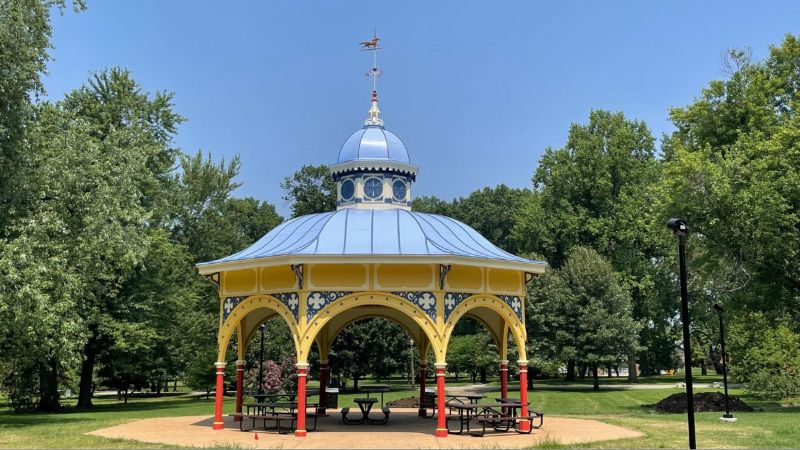
It also hosts the annual Festival of Nations, a two-day cultural festival with food, entertainment, and vendors representing cultures worldwide.
Lafayette Park: The oldest urban park west of the Mississippi.
It’s about 30 acres and features a beautiful lake with a picturesque bridge and entryway.
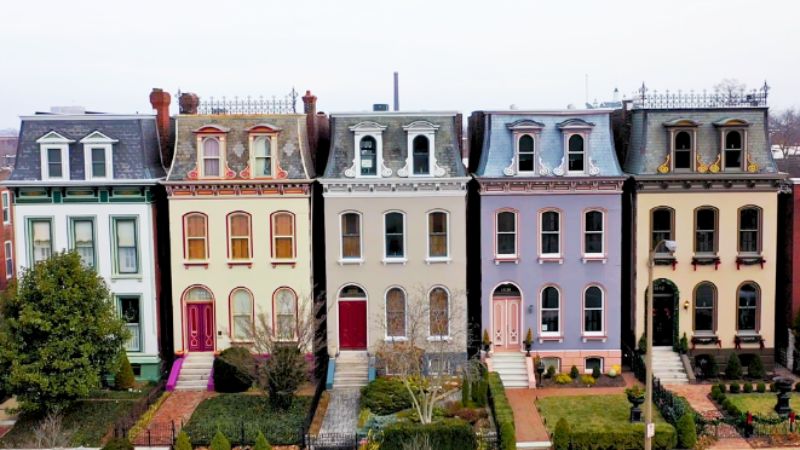
It’s the centerpiece of Lafayette Square, known for the Painted Ladies looking over the park.
The Painted Ladies are some of the most iconic homes in St. Louis.
4. Excellent Educational Institutions
St. Louis is home to top-notch colleges, trade schools, community colleges, private schools, and religious schools.
St. Louis has a notably large scene for Catholic schools.
There’s something for everyone, with a strong focus on research and medical fields, which bring jobs and excellent healthcare options.
Saint Louis University (SLU): SLU is a private Jesuit research university and the oldest university west of the Mississippi River.
It’s well-regarded in the region for its medical campus and research programs.
SLU has a school of law and offers a variety of undergraduate degrees, as well as master’s and doctorate programs.
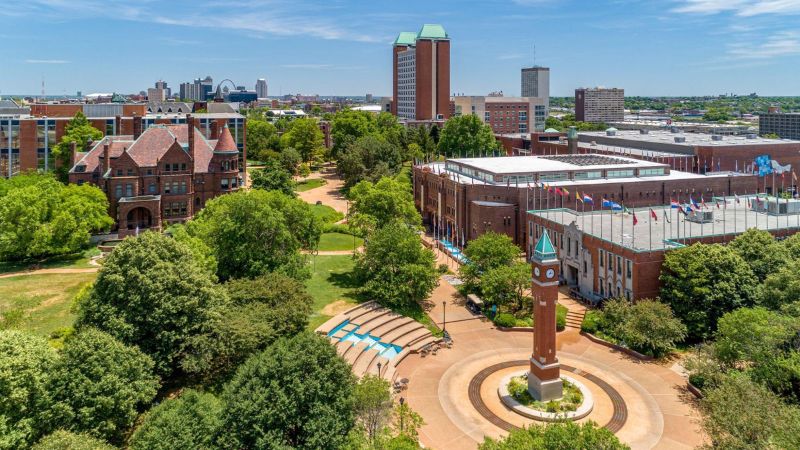
Washington University in St. Louis (WashU): WashU is another private college in St. Louis known for its business school, law school, medical school, and engineering school.
According to the U.S. news report, it is ranked #24 in national universities and #18 in Best Value Schools.
University of Missouri St. Louis (UMSL): Pronounced “Um-Sul,” UMSL is a public research university.
It’s primarily known for its business, management, and marketing programs. It also offers a variety of degrees, including reputable programs in psychology and education.
In addition to these major universities, St. Louis has:
- St. Louis Community College
- Harris-Stowe State University
- Ranken Technical College
- Webster University
5. Food and Nightlife Options
The food scene in St. Louis is amazing.
Most people don’t think of St. Louis as a foodie city, but it has a huge range of dining options.
The nightlife and music scene is lively, with new options popping up every year.
From culinary festivals with delicious food to trendy night markets and clubs, St. Louis has a pulse all its own.
Here are some highlights:
On South Grand, you’ll find a variety of restaurants representing cuisines from around the world. From The King and I’s Thai food to Ethiopian Meskerem to the more familiar City Diner.
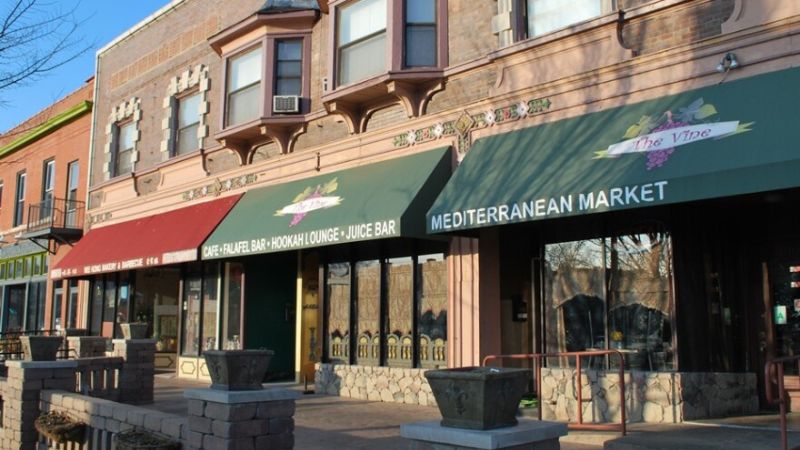
For a more formal dining experience, there is Blood and Sand, Nobu’s Sushi, and Bailey’s Chocolate Bar (just to name a few).
St. Louis is known for its BBQ.
Some local favorites are Salt and Smoke, Sugarfire, Pappy’s, and Bogarts.
Whether you’re looking for a good place for a casual night out on the town or a romantic night with upscale eateries and bars, St. Louis has you covered.
The Armory is the largest bar in STL. It offers games, live music, food, and even a slide.
The bar is designed to look like an indoor-outdoor space and caters to those looking for good drinks and fun activities.
City Foundry: Just across from The Armory, City Foundry has:
- A food hall
- Boutique shopping
- Indoor mini golf
- A movie theater
- City Winery
- Virtual reality gaming center
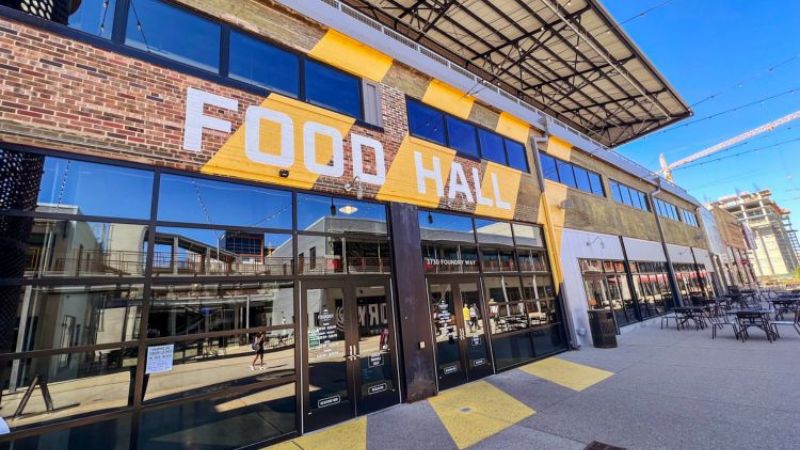
Central West End: Central West End is a little more upscale with restaurants, cocktail bars, and shopping. The area gets pretty lively at night and tends to have a younger crowd.
The Grove: As you enter, you’re greeted by a large Neon Sign that says “The Grove.” This area is known for its LGBT-friendly venues, low-key eateries, and quirky bars. Though the neighborhood’s name is technically Forest Park Southeast, everyone calls it The Grove.
Soulard: Soulard is mostly known for the Mardi Gras Festival, which takes over the streets every year. This area is very casual, and you’ll see a lot of golf carts and, on a nice night, trolley bars.
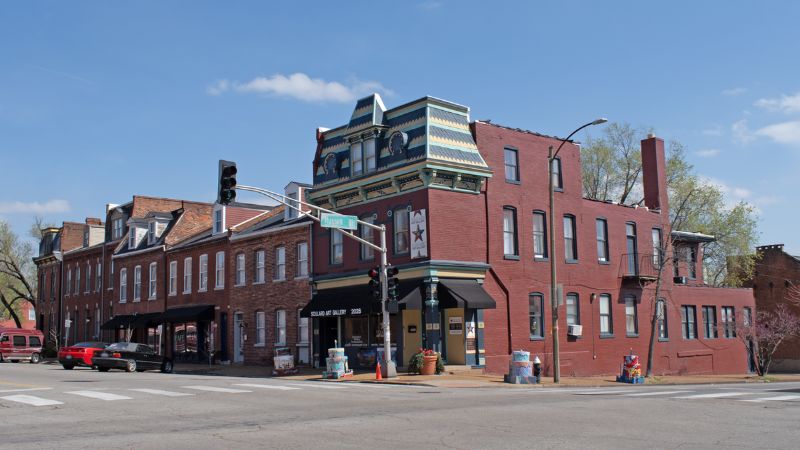
6. History and Architecture
St. Louis was a major hub in the United States a century ago.
It was the 4th largest city in the US from 1870 to 1920.
When it hosted the World’s Fair in 1904, nearly 19.7 million people attended!
St. Louis values its history, which you can see as you walk around the city.
You’ll see historic homes, museums, and businesses dedicated to preserving the brick Federalist, Victorian, and Italianate buildings that still stand today.
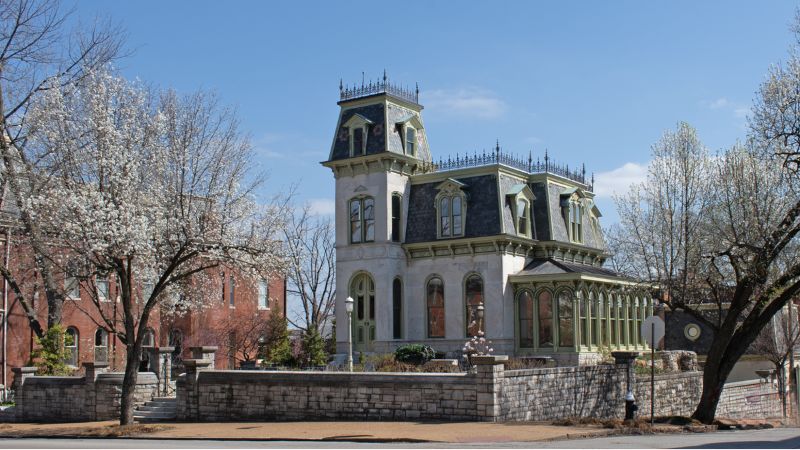
If you’re a history buff, there is no shortage of social groups and enthusiasts who are happy to talk about St. Louis’ rich past.
From the Lemp Brewery and Mansion to tours at Bellefontaine Cemetery, you’ll have plenty of historic sites to visit.
St. Louis cares about preserving the stories and structures that made it what it is today.
7. Sports Culture
St. Louis is a true baseball town. It passionately celebrates the St. Louis Cardinals, who play at Busch Stadium and have won 11 World Series titles.
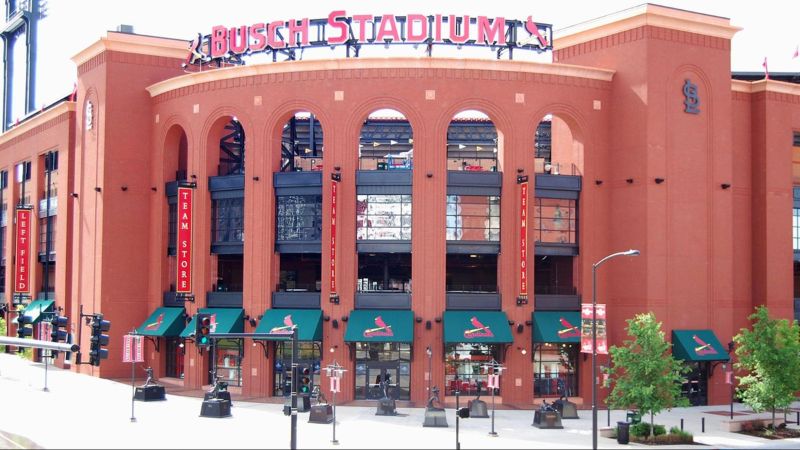
The city also boasts two other professional sports teams:
- St. Louis Blues hockey team
- St. Louis City SC soccer team
All of St. Louis’ sports venues are centrally located in town, creating a lively atmosphere on game nights.
8. Central Location
St. Louis is centrally located, making traveling to other major cities and states convenient.
Here’s how long it takes to drive to nearby cities from St. Louis:

9. Growing Job Market
According to the Wall Street Journal, St. Louis is one of the 20 hottest job markets in the U.S.
STL gained close to 31,000 workers over the last year, with Leisure & Hospitality experiencing the most significant positive growth, followed by Education and Health Services, according to the U.S. Bureau of Labor Statistics.
Here are some of the biggest employers in St. Louis:
- Boeing
- Anheuser-Busch
- Edward Jones
- BJC Healthcare
- SSM Health
- Enterprise
- Centene
- Stifel
- General Motors
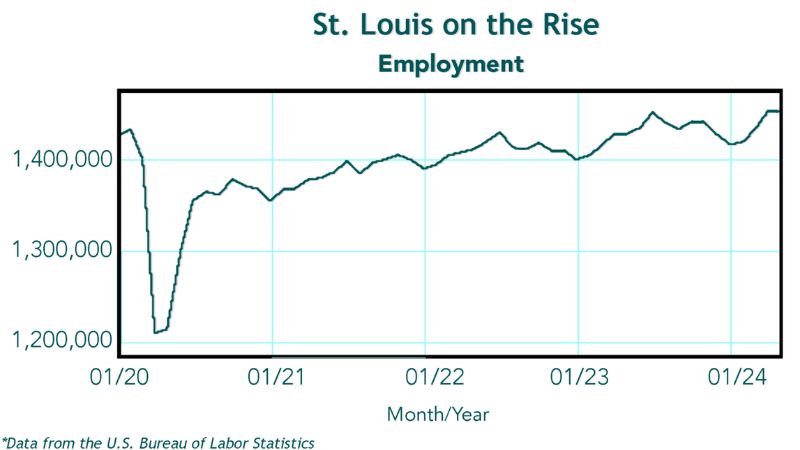
10. Light Traffic
If you’re coming from a city like Atlanta, NYC, or LA, you might find it funny the first time someone in St. Louis mentions rush hour traffic.
In St. Louis, there’s just not much traffic.
Sure, there is the occasional accident or hang-up due to construction, but overall, traffic is light, and it’s easy to get around.
Cons of Living in St. Louis
1. Declining Population in the City and County
There’s no fun way to say it: St. Louis is a shrinking city.
According to the U.S. Census Bureau, the population decline has slowed, but in 2023, St. Louis saw an estimated 1.5% drop, one of the nation’s worst declines.
A lot of this is attributed to westward expansion, particularly the growth in St. Charles County.
People aren’t necessarily leaving the St. Louis area; they’re just leaving the city.
Despite this, there are a lot of positive things pointing to the possibility of growth.
The city and community leaders are making significant efforts to revitalize St. Louis through urban planning initiatives that aim to restore waterfront areas and update infrastructure.
2. Crime Rates
In the National news, St. Louis is often talked about for its high crime rates.
While crime is a significant issue in some areas, it’s important to look at context.
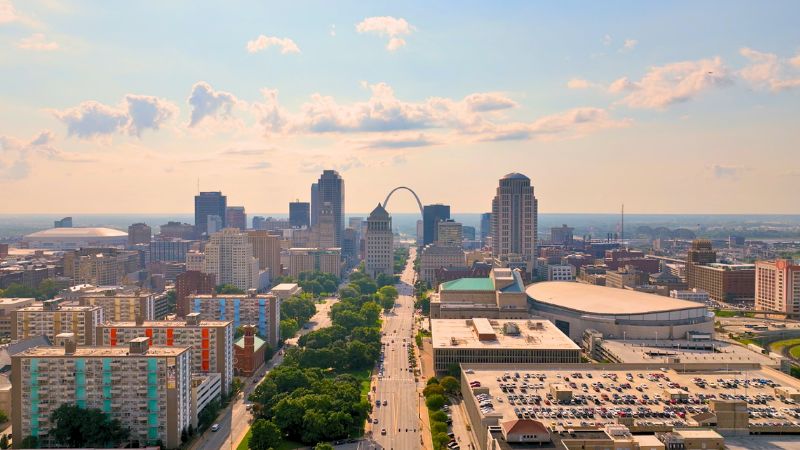
Numbers can get skewed because St. Louis City is its own county. That means when looking at St. Louis City statistics, you’re dealing with a population of about 280,000 people.
This doesn’t take into account the 2.5 million people living in counties outside St. Louis City.
To get a realistic look at statistics compared to other cities, you need to count the metro region.
When you look at the numbers through that lens, St. Louis is comparable to other cities of the same size in terms of crime.
Here are some metrics to look at when discussing crime:
- Violent crime
- Property crime
- Theft
- Homicides
Just like any other city, St. Louis has its crime issues.
While most residents express feeling safe, they will add that a healthy dose of vigilance in certain areas is necessary. Common sense and situational awareness are key.
While crime numbers are reported to be the lowest they’ve been in a decade, it’s still a concern that city officials are actively working on.
According to a recent report from the St. Louis Metropolitan Police Department, downtown areas and the northern areas of St. Louis reported the most crime. Overall, there was a decrease in crime.
3. Extreme Weather Conditions
Weather can be hit or miss in St. Louis.
You can get heat and humidity that feels oppressive to winter days that dump inches of ice and snow.
In St. Louis, we have a range of weather conditions and natural disasters like:
- Tornadoes
- Flash flooding
- Hail
- Ice storms
- Heat waves
Sometimes, you’ll feel like you experience all four seasons in one day.
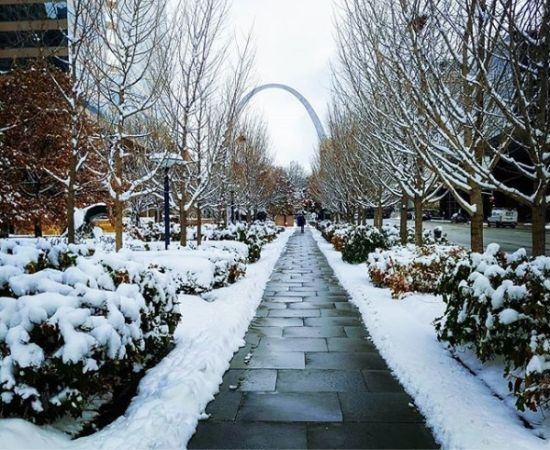
There are nice days sprinkled in St. Louis summers and winters that bring a sense of relief.
You’ll have a couple of weeks of beautiful weather in the Spring and Fall, and sometimes, a really nice breeze from the East will blow in.
I’d say the bad days just make you appreciate the nice days even more.
If you’re coming from a warmer climate that doesn’t have ice and snow, invest in a good winter coat.
4. Limited Public Transportation
The public transportation system in St. Louis is very limited.
There is a light rail system, the Metrolink, but it has 39 stations and mostly goes East to West. It doesn’t go very far into St. Louis County or beyond.
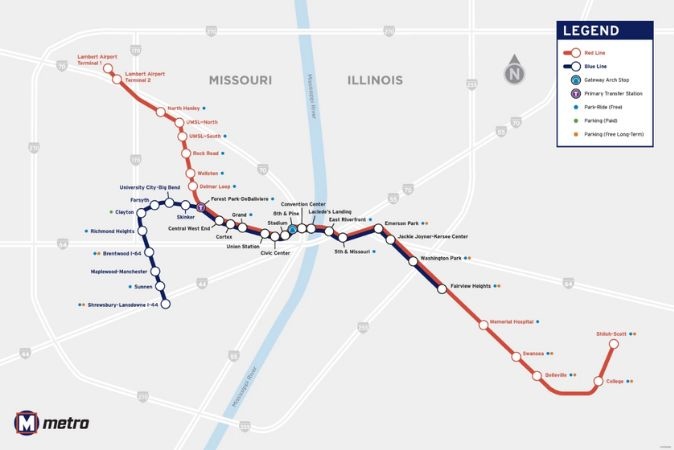
The 59 MetroBus routes cover more ground, although buses can run slowly due to worker shortages.
There’s a free trolley in the Delmar Loop, but the community has criticized it for disrupting traffic in the already-congested area.
While it is possible to get around in Saint Louis without a car, having a car certainly makes things much easier when considering the public transportation options.
5. Urban Decay and Abandoned Buildings
There is a lot of urban decay in some areas of St. Louis.
Some of those areas are getting a facelift, like Chouteau’s Landing, which is getting rebranded as “Gateway South.”
There are restoration enthusiasts who buy dilapidated historic houses and work to restore them to their former glory.
Some of the houses around Lafayette Park started off this way, in complete disrepair until a small group of people came together to restore the homes and build up the area.
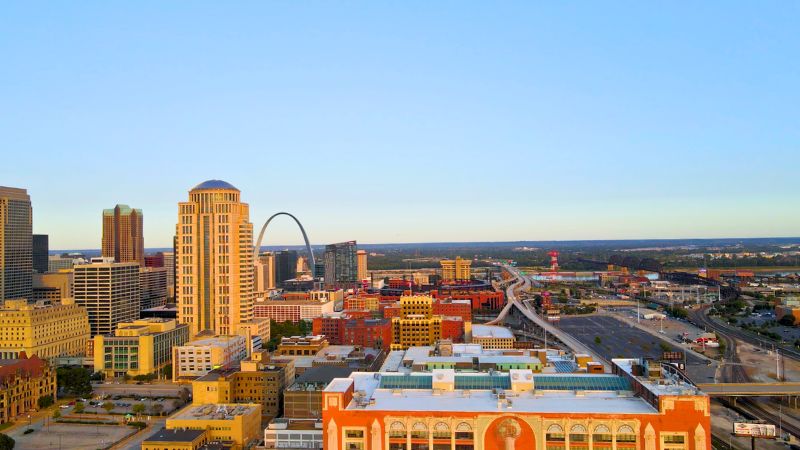
In most areas of St. Louis, there are abandoned buildings mixed in with restored homes and booming businesses mixed in with places barely getting by.
Dutchtown is a prime example of an area on the rise.
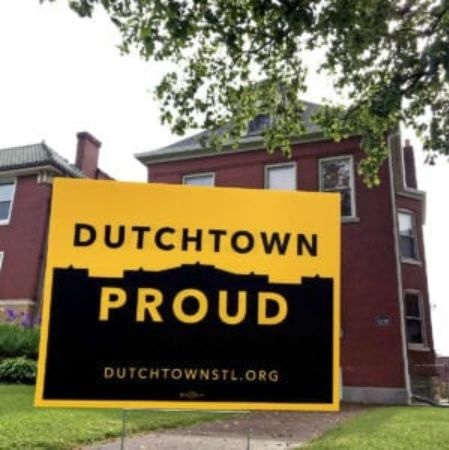
Many residents and businesses in Dutchtown display “Dutchtown Proud” signs.
Residents are buying up cheap, run-down houses to fix them up, and new businesses are setting up shop.
You’ll see this kind of rallying a lot in St. Louis. People have a lot of pride for their neighborhood, and that’s one of the things I love about St. Louis.
6. Small-Town Mentality
The best way to describe St. Louis is that it’s a really big small town.
It doesn’t have the “Big City” feel like Chicago, but it’s more than a small town.
Everyone in St. Louis seems to know each other. Whether they know each other from work, college, high school, or even preschool (you’d be surprised).
A lot of people who live in St. Louis are originally from the area.
Though many people leave for college, grad school, or the first few years of their career, many come back to start families.
Even though there are lots of people moving to St. Louis, many of them are simply moving back.
This means it can be difficult to establish a social circle here since STL can be a cliquey city.
Moving to St. Louis: Consider the Pros & Cons
Whether you’re thinking about living in St. Louis City or a St. Louis suburb, it’s important to consider the area’s pros and cons.
St. Louis and the surrounding areas have great schools, an amazing arts and culture scene, three professional sports teams, a rising job market, and plenty of recreational activities.
The city is still experiencing a population decline, and crime is a concern in certain areas, but the leaders and community of St. Louis are constantly striving to make it a better place for all St. Louisans.
If you decide to make St. Louis your home, you’ll have access to everything the city has to offer and become a part of a community that genuinely wants to see you succeed!





